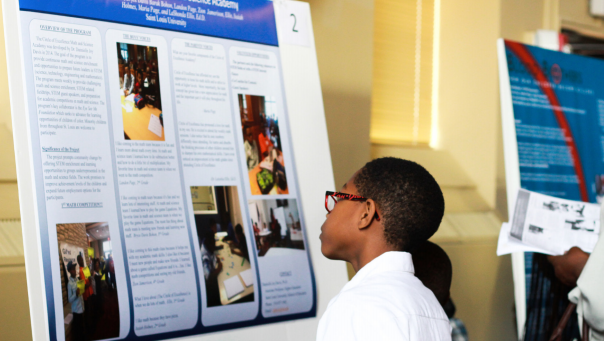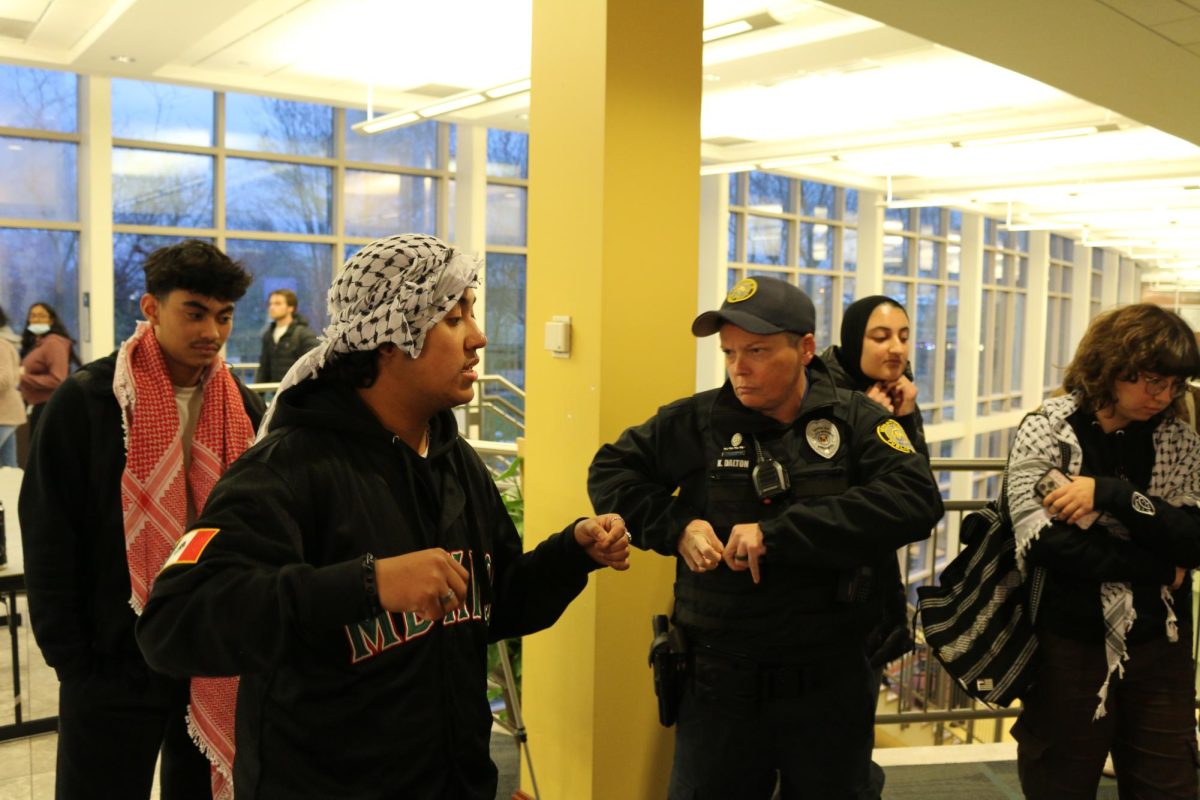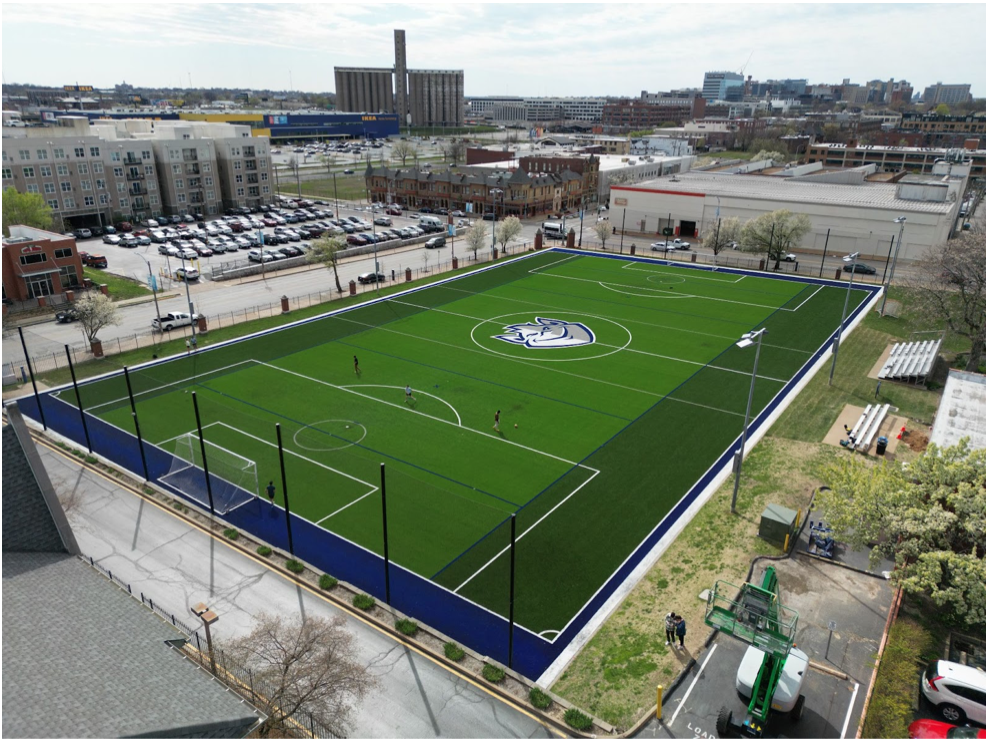On Saturday, April 1, the 17th annual Atlas Week exhibit kicked off with a Public Health Scholar Bowl, St. Louis Public Health Fair and a presentation regarding the exploration of Latin America and the Caribbean. Included within the event calendar for the week were presentations stretching from issues with internal law, feminism, sexual assault prevention and refugee narratives, along with others, to educate students, faculty and staff in respect to current issues encountered today.
Senior Public Relations major Annie Eveker utilized her minoring expertise in Meteorology and Environmental Science to present a topic relating to climate change, and inevitably, the impact of the carbon footprint, titled “Environmental Refugees.” The discussion was held Wednesday, April 5 in the Busch Student Center.
Starting out with the stereotypical definition of a “refugee,” Eveker explained how the community usually perceives this group as “being persecuted to such a high degree that they can’t live in their homes anymore.” While this is usually a commonality amongst most refugees, she eluded that this standpoint is not always the case — “The environment can cause refugees to move away too,” she said. “What you release into the atmosphere can stay there for a long period of time, and it collects the energy without releasing it back into space.”
Looking at a long-term graph over a century, Eveker eluded that while the environment is increasing in temperature, it is a gradual change rather than expedited. Visually, the climate appeared to have made a turning point around 1970, according to the graph presented, as Eveker explained that the fluctuations can be categorized into three components as researched by scientists: variations in the sun’s energy reaching Earth, reflectivity of the earth and deforestation/reforestation/ urbanization.
“Te last point contributes to a rise in the global temperature, and it depends on that area,” she said. “We are in the city, so it might be a little bit warmer since we have concrete, which soaks up the heat.” Sophomore Meteorology major Matt Roark also chimed in, clarifying that “the earth acts as a blackbody. Blackbodies absorb all the radiation. Earth’s natural blanket of greenhouse gases is very good — if we didn’t have greenhouse gases, we would experience average temperatures of about -19 degrees Celsius. However, natural is the key. Right now, we are adding so many gases that the earth cannot naturally sustain that amount, leading to our sources above Earth’s natural sinks.”
Consequently, the atmosphere is becoming consistently warmer, but the heat needs to be reabsorbed somewhere, leading to the ocean temperatures rising. “The ramifications are significant,” Eveker mentioned as “there is an increase in global temperature, rising sea levels, dying diversity, more diseases among people, inhabitable land, deterioration to infrastructures because of more severe weather and, ultimately, environmental refugees.”
Environmental refugees came about to seek a better lifestyle to preserve their survival. Whether they are seeking refuge from deserts, droughts, floods or hurricanes, these people exhibited a lower quality of life which had negative ramifications on their safety and food supply.
“The actual definition of an ‘environmental refugee’ describes them as people who are forced to leave their traditional habitat temporarily or permanently because of the environmental destruction that jeopardizes their existence or sacrifices their quality of life,” she said. “During 2012, approximately 32.4 million were displaced by the environmental disasters, including those forced to relocate within their countries — 98 percent of this 32.4 million was caused by climatic disasters, especially flooding.”
While this issue is usually brought to light in third world countries, such as Haiti, it is closer to home than expected. There is erosion occurring within the Aleutian Islands in Alaska, which “is causing the native people to seek new homes,” Roark explained. He later mentioned that “as the tide has risen, resulting in a sea level change, the people’s houses have toppled.”
The issue appears intangible to tackle on a local scale, but both Eveker and Roark highlighted that while one person cannot solely deter the environmental changes, collectively, a larger group can make an impact. Whether it can stem from raising awareness about environmental refugees or by decreasing the carbon footprint, “any little bit helps to decrease the lasting negative impacts on Earth,” Eveker said.







Okuse Marvellous • Apr 15, 2020 at 11:33 am
I have been going through the internet for some times now. There is something that amaze me about your site and that is the way you place your articles. I have read lots of your articles on your site and they are really wonderful mostly this particular one. Thanks for the review, I wish to come back to read more. https://www.tecteem.com/wapquick-tv-series-movies-videos-games-www-wapquick-com/